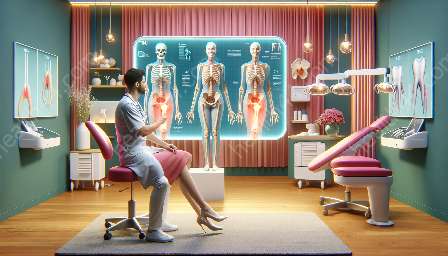The temporomandibular joint (TMJ) plays a crucial role in the movement and function of the jaw. Understanding the biomechanics of the TMJ is essential for determining the most effective surgical interventions for temporomandibular joint disorders (TMD). In this topic cluster, we will delve into the intricate biomechanics of the TMJ and its influence on the choice of surgical treatments for TMD.
The Biomechanics of the Temporomandibular Joint
The temporomandibular joint is a unique synovial joint that connects the mandible (lower jaw) to the temporal bone of the skull. It allows for various movements, including hinge-like opening and closing, sliding, and rotation, which are essential for activities such as chewing, talking, and yawning.
The biomechanics of the TMJ involve the complex interplay of articular surfaces, cartilage, ligaments, muscles, and nerves. The joint functions through a combination of hinge and sliding motions, facilitated by the articular disc and surrounding structures. Additionally, the muscles of mastication, including the temporalis, masseter, and medial pterygoid, play a significant role in the biomechanics of the TMJ.
Implications for Surgical Interventions
When considering surgical interventions for temporomandibular joint disorders, it is essential to take into account the biomechanical factors that contribute to the dysfunction of the TMJ. Various TMD conditions, such as disc displacement, arthritis, and congenital anomalies, can impact the biomechanics of the joint, leading to pain, limited mobility, and functional impairment.
Surgical treatments for TMD aim to address the underlying biomechanical issues and restore normal function of the TMJ. Procedures such as arthroscopy, arthroplasty, disc repositioning, and joint replacement are tailored to correct specific biomechanical abnormalities and alleviate symptoms associated with TMD.
Biomechanical Considerations in Surgical Decision-Making
When evaluating the biomechanics of the temporomandibular joint, several factors influence the choice of surgical interventions. These factors include the nature and extent of the TMD, the structural integrity of the joint components, the presence of degenerative changes, and the individual patient's functional requirements.
For example, in cases of severe degeneration of the articular surfaces and extensive damage to the articular disc, joint replacement surgery may be considered to restore the biomechanical integrity of the TMJ. Conversely, minimally invasive arthroscopic procedures may be appropriate for addressing more localized disc displacement or inflammatory conditions affecting the joint.
Optimizing Surgical Outcomes through Biomechanical Analysis
Integrating biomechanical analysis into the planning and execution of surgical interventions for TMD is crucial for optimizing outcomes and minimizing postoperative complications. Advanced imaging modalities, such as cone-beam computed tomography (CBCT) and magnetic resonance imaging (MRI), provide detailed insights into the biomechanical status of the TMJ, aiding in the precise localization of pathology and the selection of the most suitable surgical approach.
Furthermore, computer-aided design (CAD) and computer-aided manufacturing (CAM) technologies enable the customization of implants and prostheses based on the individual biomechanical requirements of the patient's TMJ, enhancing the precision and longevity of surgical outcomes.
Conclusion
The biomechanics of the temporomandibular joint significantly influence the choice of surgical interventions for temporomandibular joint disorders. By comprehensively understanding the biomechanical intricacies of the TMJ and their implications for TMD, surgeons can tailor surgical treatments to address specific biomechanical abnormalities and improve the overall function and comfort of the patient. Through the integration of advanced imaging techniques and technological advancements, the field of surgical interventions for TMD continues to evolve, offering patients personalized solutions that prioritize biomechanical restoration and functional enhancement.


